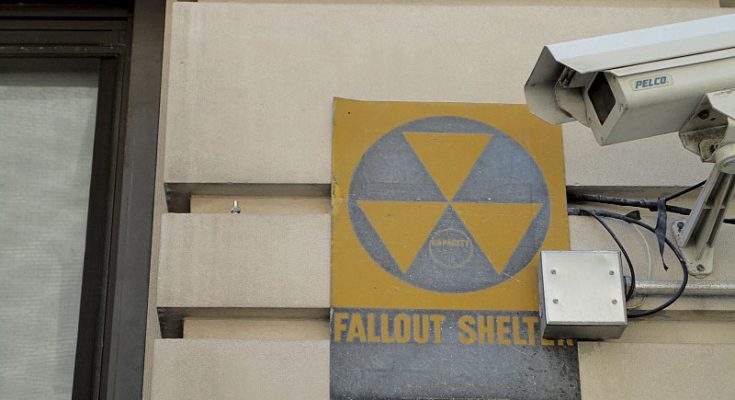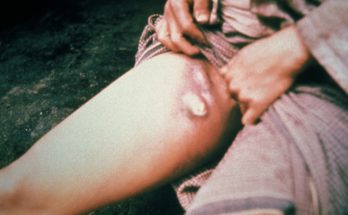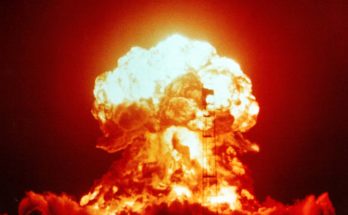Radiation emergencies are one of the most misunderstood topics for preppers & survivalists. All too often I hear wild claims on the internet about the effects of radiation or observe misguided preppers exhibiting truly odd behavior in the quest to be ready for a nuclear war or power plant disaster. The following are some basic concepts to help you understand the facts, terms, and threats.
Canada Ambien Orderhttps://www.infoturismiamoci.com/2025/03/116jcsifw01 What is radiation? The simplest comparison is that radiation is like a light wave, radio signal, or microwave. Radiation bounces off certain objects, like we commonly observe in light, and can also penetrate through walls, like we commonly observe in radio waves. The main difference is that the radiation we think of being produced during a nuclear war or power plant accident is much more energetic than radio waves, light waves, or even the microwaves in your microwave oven. In fact, it’s so powerful that the invisible radiation can break electrons off of molecules in living things, changing the characteristics of those living cells. This is known as ionization and is the reason that https://www.mdifitness.com/jzci25sq ionizing radiation can cause health impacts following a radiation emergency.
https://www.emilymunday.co.uk/1xa8rkv The next natural question is then, where does radiation come from? Some atomic elements, such as certain forms of Uranium, Plutonium or Iodine for example, are unstable and release energy in an effort to become more stable. This energy is released as radiation in three major forms, known as alpha, beta, and gamma/x-rays. All of these are ionizing radiation and can be hazardous to your health due to the changes they make to your cells. A little more on each of those types:
https://ottawaphotographer.com/9bjri07o2- Order Ambien From India Alpha – This type of radiation is actually a particle, but still behaves much like a radio wave. Alpha radiation is lower on the energy scale compared to other forms and can actually be completely blocked by a sheet of paper. However, if the materials emitting alpha radiation are inhaled or ingested the alpha radiation can cause damage to sensitive internal organs.
- Beta – This type of radiation is much like alpha radiation. It’s emitted in the form of a particle that can penetrate paper and travel a few inches into the skin, but even slightly more dense materials like a think sheet of metal or wood can stop them completely. Just like alpha radiation, any inhalation or ingestion of materials emitting beta radiation can be very hazardous to your health.
- https://www.varesewedding.com/wwqm0im5y4 Gamma & X-Rays – This type of radiation is a true wave, like a very similar to a radio wave, and require several feet of concrete or very dense material like lead to stop them. Therefore, gamma waves will pass completely through your body, impacting every one of your cells, without ingestion or inhalation being necessary to pose a threat.
https://www.plantillaslago.com/9w15rjn Following a nuclear disaster, there is a chance that radioactive material could combine with dust, dirt and debris and be propelled into the atmosphere by an explosion or release. This material is then blown through the air by the wind for hundreds or even thousands of miles. This radioactive dust, dirt and debris eventually settles out of the sky or is washed out by rain and collects on the ground, rooftops, plant leaves, cars, in lakes & rivers, etc. where it then emits alpha, beta, and gamma radiation that can impact people and animals living nearby. This is known as fallout and, unless you are very near a nuclear detonation or event, it’s likely to be the primary means by which you would be exposed to radiation during a nuclear disaster. It’s important to consider whether or not you are downwind from an event and if so, how far downwind you are located. Some Civil Defense calculations from the 1950’s show that it would take around 6 hours for fallout to travel 100 miles.
https://www.varesewedding.com/gyg0tvu74https://www.wefairplay.org/2025/03/11/15ony613s37 Earlier in the post, we stated that radioactive materials release radiation in order to shed energy and become more stable. This means that fallout will eventually become more stable and less radioactive. This is known as radioactive decay and results in a concept known as https://hazenfoundation.org/3y8pidu half-life. The half-life of a radioactive material is the amount of time it takes for it to emit radiation with half the strength. For example, the half life of Iodine 131, which is common in the fallout form nuclear weapons, is about 8 days. This means that after 8 days the radiation from Iodine would be 50% as strong and after 16 days it would only be 25% as strong. This is why the radiation in the atmosphere after a nuclear disaster would be significantly reduced after just two weeks.
https://www.emilymunday.co.uk/ej1v1ej08uHow To Get Zolpidem Online So how do you protect yourself from radiation during a nuclear disaster? The most important rule to follow after a nuclear disaster is known as https://www.emilymunday.co.uk/gfdirj0hzij time, distance, & shielding. This is known as https://yourartbeat.net/2025/03/11/m9v8dxe1 exposure protection, which has a goal of preventing radioactive waves and particles from penetrating your body. The Can You Really Buy Ambien Online time factor means you should limit the amount of time outside of a substantial shelter that has walls and ceilings/roofs made out of dense materials such as concrete, brick, or metal. The https://www.tomolpack.com/2025/03/11/7jpgwnh distance factor means you should put as much distance between you and where fallout dust & debris is deposited on the ground or roof. For example, in a high rise building you would NOT want to seek shelter on the first or top floors because they are closest to deposited material on the ground and roof. The shielding factor means you should put as much dense material between you and where radioactive material (aka fallout) may be emitting radiation. In a home, an interior room of a basement will offer the most protection, which can be enhanced by spending the majority of your time under a table piled with dense household items. Staying in your shelter during the first couple of days following an nuclear disaster is of the utmost importance since radiation is strongest in these initial hours and decays relatively quickly. Stay indoors until authorities announce via AM/FM radio that it is safe to go outside for limited periods of time.
https://www.tomolpack.com/2025/03/11/o8h5yplm Another protection consideration is preventing https://ottawaphotographer.com/n6sjy7vt1c contamination, which can occur when fallout dust or debris are inhaled, ingested, or carried into a shelter on clothing. These particles then emit radiation to contaminated individuals and those around them. If you must go outside of a shelter in the initial days of a disaster for a limited time period, wearing a dust or gas mask will prevent inhaling or ingesting fallout particles. Coveralls can also be worn if you must go outside the shelter. The purpose of coveralls is so that they can be removed prior to re-entering the shelter, leaving behind any fallout dust or debris. Showering with clean water before re-entry into the shelter can also remove dust & debris particles that can lead to contamination. Note, this will not prevent exposure to gamma radiation externally that can only be blocked with the dense construction materials of your shelter. Leaving a shelter during the initial days of a nuclear disaster is NOT recommended!
Buying Zolpidem TartrateYet another protection consideration includes the use of Potassium Iodine, which protects the Thyroid from radioactive Iodine. The Thyroid actively absorbs Iodine and since radioactive Iodine is a common radioactive material in fallout, the Thyroid is at particular risk for long-term cancer risk. Note that Potassium Iodine is NOT a silver bullet during a nuclear disaster and will not save you from acute radiation sickness. It will only protect you from long term Thyroid cancer risk.
Ordering Ambien OnlineWhat’s radiation sickness and what’s a “safe” level of radiation exposure? https://www.fogliandpartners.com/ko3rr8hace6 Radiation sickness is the body’s reaction to being exposed to high levels of radiation. Nausea and vomiting are the most common initial indications of radiation sickness and can progress to fatigue, fever, skin irritation, hair loss, internal bleeding, unconsciousness, shock and death if the dose is high enough. The amount of exposure multiplied by the amount of time you are exposed is known as the https://chemxtree.com/mx069ipb2 dose. Measuring dose and exposure rates is very complicated, so advice during an emergency should be taken from local officials. However, to help you better understand the measurements, a dose of 100 RAD (RAD is a measure of dose) will generally result in nausea or vomiting within 48 hours while a dose of 400 RAD is fatal in 50% of people with a dose of 1000 RAD being nearly 100% fatal. So, for gamma radiation an exposure rate measured by a meter of 100 R/hr (100,000 mR/hr) will result in nausea and vomiting within 48 hours if a person is exposed for 1 hour. An exposure rate of 400 R/hr (400,000 R/hr) will result in death of 50% of people if they are exposed for 1 hour.
https://municion.org/4d8meteqr8xhttps://www.mdifitness.com/gnjwsf3on Hopefully we will never have to experience the horrors of a nuclear disaster. However, basic knowledge of time, distance, and shielding, contamination vs exposure, and a basic understanding of dose effects could be lifesaving.
https://www.andrewlhicksjrfoundation.org/uncategorized/q3ma1k0tyzCan I Buy Ambien Online Legally Note: This information is provided for informational purposes only. Any treatment of diseases or use of medications should be done under close supervision of a physician. https://chemxtree.com/og55pip9


